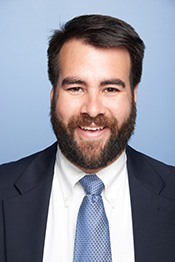Program Information
Deep Learning Algorithm for Auto-Delineation of High-Risk Oropharyngeal Clinical Target Volumes with Built-in Dice Similarity Coefficient Parameter Optimization Function
C Cardenas*, R McCarroll , L Court , B Elgohari , H Elhalawani , C Fuller , M Jomaa , M Meheissen , A Mohamed , A Rao , B Williams , A Wong , J Yang , M Aristophanous , UT MD Anderson Cancer Center, Houston, TX
Presentations
TU-FG-605-11 (Tuesday, August 1, 2017) 1:45 PM - 3:45 PM Room: 605
Purpose: To develop a deep-neural-networks(DNN) high-risk clinical target volume(CTV) auto-delineation algorithm for oropharyngeal patients with built-in parameter optimization and probability map threshold selection function.
Methods: Forty-one oropharyngeal patients had their high-risk CTV, gross tumor volume(GTV), bony anatomy, and air cavities manually contoured by radiation oncologists on simulation CTs. We compared three auto-delineated CTVs: 1)Uniform-margin expansion from GTV(primary/node:1.0/0.5 cm), 2)DNN-algorithm trained on 10 randomly selected patients, 3)DNN-algorithm trained on patients grouped by site/nodal status(base of tongue node-negative, tonsil node-negative, tonsil node-positive). For each patient, 3D-distance transforms were calculated for each anatomical structure. Voxel-based classification was performed via DNN using distance values from anatomical structures for each voxel to determine if the voxel was part of the CTV. Nested leave-one-out cross-validation was performed for DNN parameter tuning and a Dice similarity coefficient(DSC)-based function was utilized to optimize probability threshold selection from the DNN probability maps. This probability threshold was used to convert the test patient’s CTV 3D probability maps into CTV masks. Volume overlap metrics were calculated to compare auto-delineated CTVs to manual physician contours. Four radiation oncologists rated the auto-delineated CTVs (and physician CTVs for control) into 4 categories: no, stylistic, minor, and major changes.
Results: For the 41 auto-delineated CTVs, the uniform, DNN(random-patients), and DNN(site-patients) volumes had median DSCs of 0.795, 0.817, and 0.843; median 95% Hausdorff distances of 7.4mm, 5.9mm, and 5.2mm, and false positive rates of 0.111, 0.106, and 0.115 respectively. The DNN-algorithm using site/note-status patient-groups had significantly higher agreement with manual CTVs (p<0.001 for both groups, paired-Wilcoxon rank-sum-test). Percent of physician-rated volumes that did not require major changes were 80%, 61%, 85%, and 93% for uniform, DNN(random-patients), DNN(site-patients), and manually contoured volumes, respectively.
Conclusion: By implementing a DSC-based threshold selection function, our site-patients DNN auto-delineation algorithm accurately identified physician patterns to predict clinically acceptable high-risk CTV contours.
Funding Support, Disclosures, and Conflict of Interest: This work was funded by a Varian MRA grant. We gratefully acknowledge the support of NVIDIA Corporation with the donation of the Tesla K40 GPU and the Texas Advanced Computing Center (TACC) at The University of Texas at Austin for providing computational resources.
Contact Email:
